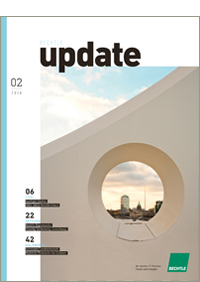
Author:
Florian Kronenbitter, Managing Director, Bechtle Rottenburg
Two weeks later, the machine has been fully fitted, plugged in and the freshly trained employees are excited to get their new toy up and running. However, even after multiple tweaks, the long hoped for and expected boost in performance is never achieved. Worse still, it’s not long before it breaks down in the middle of a job. Shock quickly turns to frustration and the managing director personally makes a formal complaint to the manufacturer. The next day, an experienced service technician arrives on-site and quickly diagnoses the problem.
The company’s own IT department had added the control PC into its IT inventory and, in accordance with in-house policy, installed an anti-malware program on it. Unfortunately, it was this that turned out to be the root of the issue as the software had either prevented necessary real-time control or had identified the machine’s software as malware and had quarantined it. And now?
The IT industry has come up with various ideas of how to solve issues like these such as digitalising the machinery described above.
Simply put, commissioning tools and devices is much more complex than in the past due to stricter IT compliance. The challenge for both manufacturers and customers is to benefit from increased digitalisation and networking without exposing themselves to hackers, because if they do, businesses of all sizes can quickly be brought to their knees.
Another factor to consider is the merging of corporate and operational IT means manufacturing companies are forced to face the issue of more difficult comissioning and production managers are increasingly seeking out the support of IT service providers. It usually only takes a few minutes for it to become clear that IT on production lines is a necessary evil that represents a fantastic opportunity for businesses and rather than ignoring it, digitalisation should be handled strategically. An initial analysis of the status quo and future value flows can be used to create an enterprise architecture model that visualises the value IT can bring and helps maintain an overview. It can then also be used as the basis for deciding which measures should be implemented and when.
In short, the successful digitalisation of production facilities demands the design and implementation of sustainable infrastructures based on the varying security requirements of both corporate and operational IT. In this way, previous digital investments that have been cast to one side as a result of firewalls policies can be put into effect to accelerate the digitalisation process by tapping into unused technologies and making a better business case. A resilient architecture model can also be leveraged to determine the maturity of the organisation, the required investments, people, technologies and processes to take production line IT up to the same giddy heights as that of the business itself.

Florian Kronenbitter has been Managing Director of Bechtle Rottenburg since 2022. As Head of IT at the MHP Management- und IT-Beratung Porsche subsidiary and after 15 years at Homag mechanical engineering company, he has gained in-depth knowledge of organisations’ differing IT requirements. Together with his team, he has taken on the task of supporting companies in the Northern Black Forest and Neckar-Alb regions as their reliable IT partner.

This is an excerpt of an article in the print edition of Bechtle update 02/2018.
